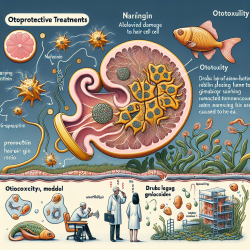Introduction to Neurodegeneration with Brain Iron Accumulation (NBIA)
Neurodegeneration with Brain Iron Accumulation (NBIA) is a group of rare, inherited neurological disorders characterized by abnormal iron accumulation in the brain. This accumulation primarily affects the basal ganglia, leading to a variety of movement disorders and cognitive impairments. With the identification of ten different genes associated with NBIA, practitioners have a unique opportunity to delve into the complexities of these disorders and enhance their diagnostic and management skills.
Key Insights from Recent Research
In the review article "Neurodegeneration with Brain Iron Accumulation: Diagnosis and Management," Dr. Penelope Hogarth and colleagues provide a comprehensive overview of the clinical presentations, imaging findings, and treatment considerations for NBIA. The article highlights the genetic diversity of NBIA, with ten identified genes contributing to the disorder. This genetic insight is crucial for practitioners aiming to improve diagnostic accuracy and tailor management strategies for affected individuals.
Clinical Implications for Practitioners
Understanding the genetic basis of NBIA allows practitioners to adopt a more personalized approach to patient care. Key clinical features, such as extrapyramidal movement disorders and cognitive impairments, can vary significantly between patients. By recognizing these variations, practitioners can better predict disease progression and tailor interventions accordingly.
Moreover, the review underscores the importance of advanced imaging techniques, such as MRI, in diagnosing NBIA. The characteristic "eye of the tiger" sign on MRI is a hallmark of Pantothenate Kinase-Associated Neurodegeneration (PKAN), a common form of NBIA. Practitioners should be adept at interpreting these imaging findings to facilitate early diagnosis and intervention.
Encouraging Further Research and Collaboration
The review article encourages practitioners to engage in further research and collaboration to enhance understanding and treatment of NBIA. Participation in patient registries and natural history studies can provide valuable insights into disease progression and treatment outcomes. Additionally, collaboration with geneticists and neurologists can foster a multidisciplinary approach to patient care, ultimately improving outcomes for individuals with NBIA.
Conclusion
For practitioners in the field of special education and online therapy, understanding the nuances of NBIA is crucial for providing comprehensive care to affected individuals. By leveraging the insights from recent research and embracing a collaborative approach, practitioners can significantly enhance their diagnostic and management skills.
To read the original research paper, please follow this link: Neurodegeneration with Brain Iron Accumulation: Diagnosis and Management.










